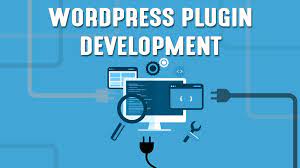Frontity is a free, open-source framework for building fast and responsive WordPress Websites with React. It is designed to simplify the process of creating WordPress Websites by providing a set of pre-configured tools and features that work seamlessly with React.
Frontity uses React as its core library for building user interfaces, which allows developers to create dynamic and responsive websites with ease. It also integrates with WordPress to provide a seamless content management experience, allowing developers to fetch and display content from their WordPress site using the WordPress REST API.
One of the key benefits of using Frontity is its performance. It uses server-side rendering and dynamic preloading to ensure that websites built with Frontity load quickly and efficiently. It also provides a range of performance optimizations out-of-the-box, such as lazy loading and image optimization.
Frontity is fully customizable and extensible, allowing developers to create custom themes and plugins that work seamlessly with the framework. It also has a growing community of developers who contribute to the project and provide support to other users.
Overall, Frontity is a powerful and flexible framework for building fast and responsive WordPress websites with React. Its ease of use, performance optimizations, and extensibility make it a popular choice for developers looking to build modern WordPress Websites.
How create website in WordPress and react with help of frontity ?
To create a website in WordPress and React using Frontity, you can follow these steps:
- Install WordPress: You’ll need to have a WordPress Website up and running. You can either install WordPress on a local development environment or on a web hosting service.
- Install and configure the Frontity plugin: Install the Frontity plugin on your WordPress website and configure it according to your needs. The plugin will handle the communication between your WordPress website and the Frontity React app.
- Install and configure Frontity: Install Frontity using the command line interface (CLI) and configure it to connect with your WordPress website. You’ll need to specify the URL of your WordPress website and the REST API endpoint.
- Choose a starter theme: Frontity offers several starter themes that you can use to kickstart your project. Choose a theme that best fits your needs and modify it as necessary.
- Develop your custom theme: Use React to build your custom theme. You can leverage the features provided by Frontity, such as routing, state management, and server-side rendering, to create a fast and responsive website.
- Test and deploy: Test your website thoroughly to ensure that it works as expected. Once you’re satisfied with the result, deploy your website to a web hosting service.
- Maintain and update: Maintain your website by keeping your plugins, themes, and WordPress core up to date. Also, stay up to date with the latest version of Frontity to take advantage of new features and bug fixes.
By following these steps, you can create a website in WordPress and React using Frontity. With Frontity, you can leverage the power of React to create fast and responsive websites that integrate seamlessly with WordPress.
How frontity is different from WordPress and React ?
Frontity is different from WordPress and React in several ways:
- WordPress vs Frontity: WordPress is a content management system (CMS) that provides a platform for creating and managing websites. Frontity, on the other hand, is a framework for building WordPress websites with React. While WordPress provides a full-stack solution for website development, Frontity focuses specifically on the front-end, allowing developers to build fast and responsive websites with React that integrate seamlessly with WordPress.
- React vs Frontity: React is a popular JavaScript library for building user interfaces. Frontity, on the other hand, is a framework that provides a set of pre-configured tools and features for building fast and responsive WordPress websites with React. While React provides the building blocks for creating user interfaces, Frontity provides a higher-level framework that streamlines the development process and provides performance optimizations out-of-the-box.
- Performance: Frontity is designed to deliver fast and responsive websites. It uses server-side rendering and dynamic preloading to ensure that websites built with Frontity load quickly and efficiently. WordPress and React, on the other hand, do not provide these performance optimizations out-of-the-box.
- Flexibility: Frontity is fully customizable and extensible, allowing developers to create custom themes and plugins that work seamlessly with the framework. This flexibility allows developers to create websites that meet their specific needs. WordPress and React, on the other hand, are more rigid in their architecture, and require developers to work within their respective paradigms.
Overall, Frontity is a specialized framework for building fast and responsive WordPress websites with React, while WordPress and React are more general-purpose solutions for website development. While Frontity provides a streamlined development experience and performance optimizations out-of-the-box, WordPress and React offer greater flexibility and a wider range of use cases.
Benefits of using frontity in WordPress Website ?
There are several benefits of using Frontity in a WordPress website:
- Fast and responsive: Frontity is designed to deliver fast and responsive websites. It uses server-side rendering and dynamic preloading to ensure that websites built with Frontity load quickly and efficiently.
- Improved performance: Frontity provides a range of performance optimizations out-of-the-box, such as lazy loading and image optimization. These optimizations can help improve the performance of your WordPress website, which can lead to better search engine rankings and increased user engagement.
- Seamless integration with WordPress: Frontity integrates seamlessly with WordPress, allowing developers to fetch and display content from their WordPress site using the WordPress REST API. This provides a great content management experience for website administrators and editors.
- Flexibility: Frontity is fully customizable and extensible, allowing developers to create custom themes and plugins that work seamlessly with the framework. This flexibility allows developers to create websites that meet their specific needs.
- Developer-friendly: Frontity is designed with developers in mind. It uses modern tools and technologies, such as React, Webpack, and Babel, which can help improve developer productivity and reduce development time.
- Growing community: Frontity has a growing community of developers who contribute to the project and provide support to other users. This community can be a valuable resource for developers who are just getting started with Frontity.
Overall, Frontity can help improve the performance, flexibility, and developer experience of a WordPress website. It provides a modern, fast, and responsive framework for building WordPress websites with React.





